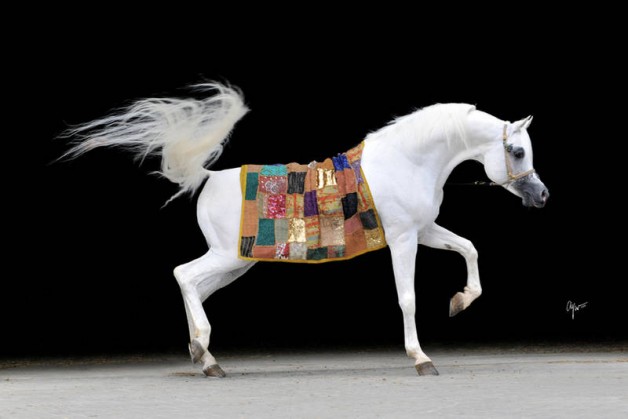By Christa Lesté-Lasserre, MA
We know that horses can pick up subtle human cues and body language. But recent study results suggest that ability is a skill that’s actually shaped by the horse’s prior training and experiences with humans.
In a novel experiment, researchers from the University of Florida and Oregon State University tested the influence of horse training methods on horses’ ability to follow human pointing gestures. They found that those trained with lots of ground work and body communication (specifically, the Parelli method) learned to recognize finger pointing faster than horses trained using traditional methods.
“The horse industry has very different training methods available, and we really wanted to compare a method that uses human body language to one that does not, in its effect on the animal’s ability to detect human gestures,” said Nicole R. Dorey, PhD, of the University of Florida.
Dorey’s team worked with two groups of horses with two different training backgrounds. Half the horses were trained by official Parelli trainers using significant ground work that relies on the horse’s recognition of cues coming from human body language, such as hand and head movements. The other half were trained using traditional methods—basic pressure/release negative reinforcement rapidly leading to mounted work under saddle and bit, where the horse does not see the human as much.
Dorey’s team taught 20 horses to recognize that treats would be placed in one of two buckets near a handler in a small testing area. Once the horses understood that food would be dropped into only one bucket, the testing phase began. The handler would point to the bucket where the food would go (randomly the left or right bucket), and the horse would choose which bucket to walk toward.
Only one horse—a Parelli horse—was able to choose the correct bucket following the pointing gesture at a higher success rate than chance alone during the first 10 trials, Dorey said.
However, after the first 10 trials, the Parelli horses showed a learning curve that the traditionally trained horses did not. They started picking up the connection between the pointing gesture and the location of the treats significantly faster than the other horses, the team said. And by the end of the experiment, 90% of the Parelli horses were consistently choosing the right bucket, compared to only 40% of the traditionally trained horses.
“The Parelli horses probably learned faster because this is what they’re trained to do, what they’re trained to look at,” Dorey said. “But I don’t think the other horses couldn’t be trained to do the same thing. I feel sure that the traditionally trained horses would have eventually learned, if we had given them more time.”
The study results also confirmed the theory that horses do not innately recognize human gestures, despite some suggestions to the contrary, Dorey added. “I feel confident in saying that horses aren’t born understanding human gestures,” she said.



